building
skis

Ski Construction: The Engineered Art of Performance
A ski is just a shaped plank of wood… well sort of. It can be, but theres a few thing you can do to make it even better. Each layer — from the core to fibres, from the sidewalls to the base and top veneer — is designed to bend, twist, rebound, and dampen vibrations in precise ways. The choices in materials, geometry, and lamination are what allow a ski to respond predictably underfoot while remaining durable in harsh mountain conditions. At Natural, every element of construction is intentional, from the core species to the fibre orientation and the innovative strand-woven bamboo sidewalls, creating skis that are strong, light, and natural.
Wood Cores: Solid vs. Laminated
The core is the foundation of a ski. Historically, skis were often made from a single solid wood plank, such as ash, beech, or hickory. These cores are strong and resilient, but heavy, and their flex characteristics depend solely on the natural grain of the wood.
Modern ski construction more commonly uses laminated cores, where multiple wood species are glued together. Laminated cores combine the best characteristics of each species: lightweight paulownia or poplar for mass reduction, bamboo for snap and rebound, and ash or beech for stiffness and damping. Laminating also improves consistency: every ski in a batch can be tuned to behave nearly identically, unlike solid cores which vary with individual trees.
The choice of strand-woven bamboo in the core and now also for sidewalls is a deliberate one. Bamboo’s extremely high tensile strength (up to 28,000 psi) and natural elasticity make it ideal for controlling rebound and torsional stiffness. By using strand-woven bamboo along the edges, the ski gains durability, edge-hold precision, and vibration damping, while remaining entirely natural. Unlike ABS or UHMWPE plastic sidewalls, bamboo integrates with the wood core’s flex pattern, allowing energy to flow naturally through the ski rather than being partially blocked or redirected by a mostly inert synthetic material.
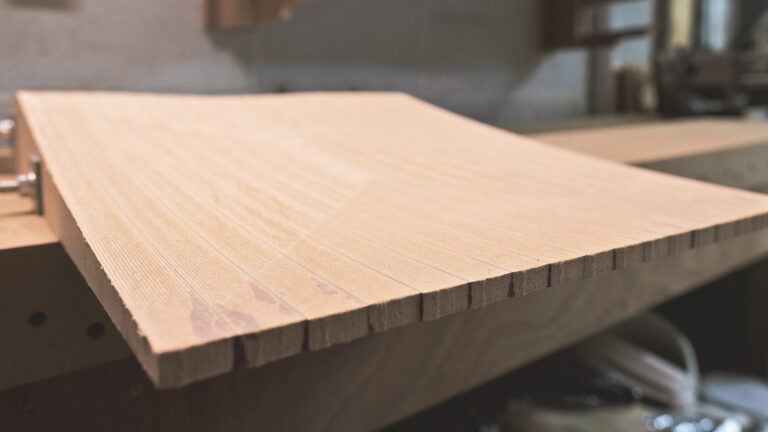
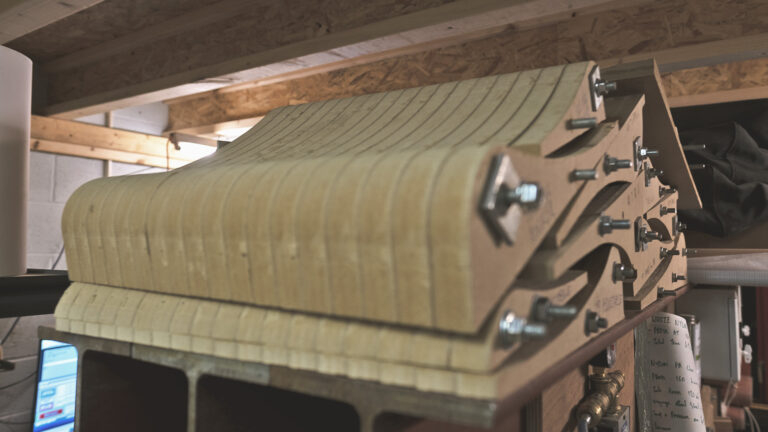
Presses and Laminating Methods
A ski is only as good as the precision with which its layers are bonded. Pressing controls how the resin system cures and how the fibres and core are integrated. You want to be able to control the temperature and pressure. Common press types include pneumatic pressure or mechanical presses or vacuum presses . Flat presses provide even pressure across the laminate, ideal for uniform torsional stiffness, while curved or cambered presses allow for skis to emerge with their rocker/camber preformed, reducing post-press shaping.
Temperature and pressure profiles are critical. Too little pressure or heat can leave micro-gaps in the laminate, causing delamination under stress. Too much can crush lighter woods or resin-rich fibres, altering the intended flex. With our natural composites — bamboo, flax, hemp, and wood veneers — careful control ensures the materials bond fully while retaining the designed spring, damping, and torsional characteristics.
Geometry and Engineered Lamination
The performance of a ski is defined not only by the materials used, but by how they are arranged. Laminating materials in a beam-like structure allows them to resist bending and torsion efficiently. The neutral axis — the line within the ski where stress is minimal during bending — is engineered by positioning stiff fibres and denser wood farther from the centre. Increasing the distance between these composite layers increases stiffness without adding excessive weight, while fibres closer to the core maintain flex and energy return.
Even the top veneer layer influences stiffness. A thicker, hard veneer like cherry, oak, or spalted beech provides a small but meaningful increase in longitudinal rigidity. Conversely, a thinner veneer allows the ski to flex more freely and respond with a softer feel. The interplay between fibre orientation, core density, and veneer thickness is what gives each ski model its unique character — whether lively and playful or precise and stable at speed. But you dont want to over think it too much, remember at the end of the day its if you like how it rides. Everyone’s different
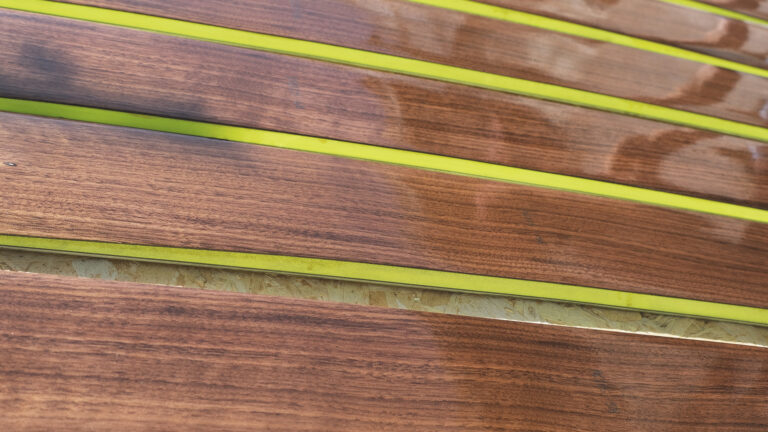
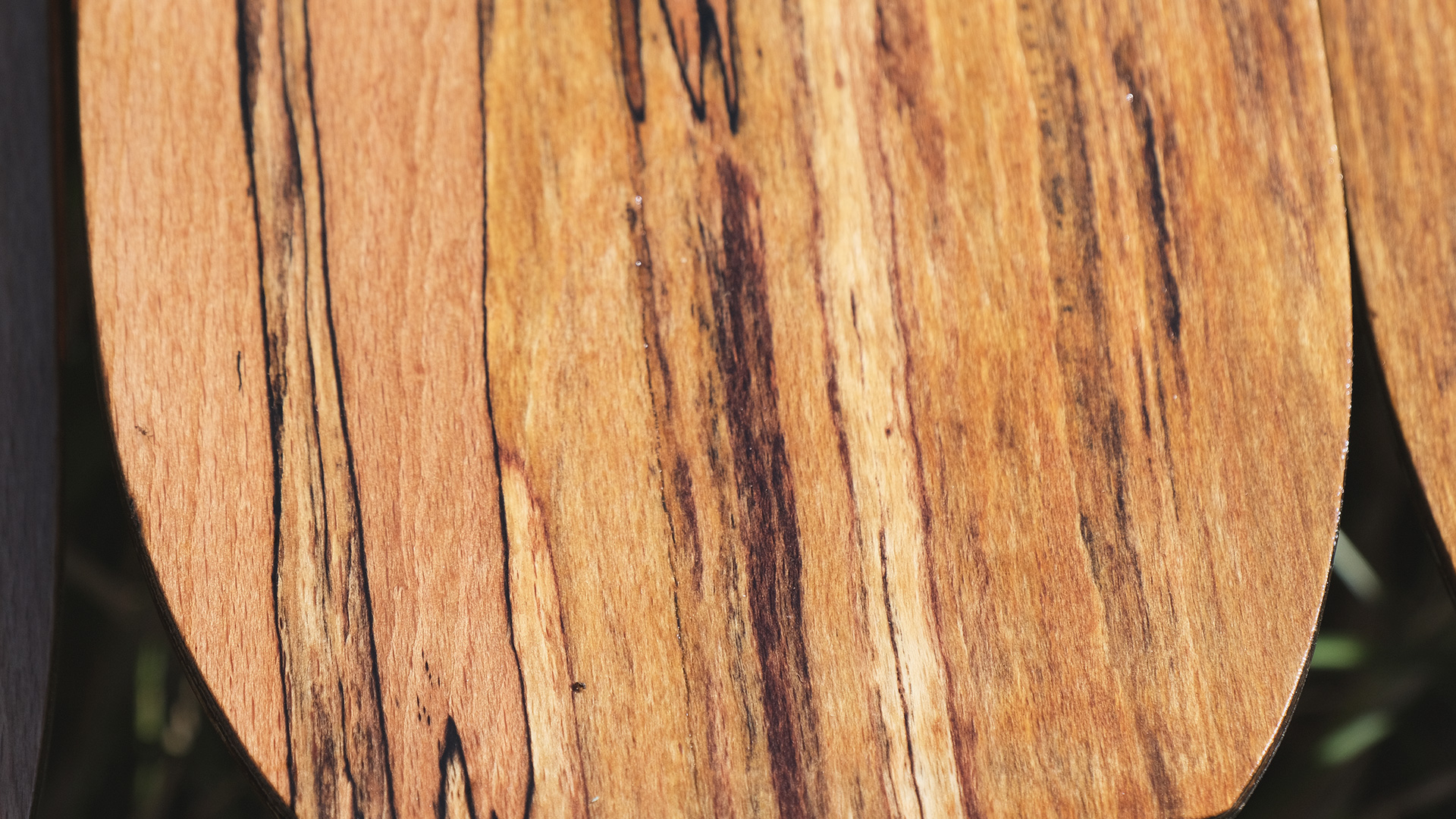
Sandwich Construction and Natural Sidewalls
Most modern skis use a sandwich construction, where the core is wrapped in fibre laminates, covered by a top veneer, and bonded to the base, edges, and sidewalls. The sandwich structure allows precise control over flex, torsion, and vibration damping, because each layer contributes predictably to the ski’s overall stiffness profile.
Sidewalls are particularly important for edge hold, impact resistance, and energy transfer. At Natural, we use strand-woven bamboo sidewalls, a departure from traditional plastics. This approach offers several advantages:
Integrated flex: Bamboo bends and rebounds in harmony with the core, ensuring a natural transfer of energy.
Vibration damping: The fibrous structure of bamboo absorbs high-frequency vibrations, smoothing chatter at high speed.
Impact resistance: Bamboo’s tensile strength and density provide protection against tip and tail strikes, while remaining lighter than ABS.
Eco-conscious: Fully renewable, biodegradable, and sourced with low environmental impact.
Cap constructions, where the top layer wraps around the sides instead of using dedicated sidewalls, remain an option for touring or freestyle skis where weight and torsional forgiveness are prioritized. Many freeride skis combine sidewalls underfoot with cap construction at the tip and tail to balance durability, rebound, and playfulness.
Rocker, Camber, and Flex Patterns
Camber is the classic arch of a ski, lifting the midsection when unweighted. This concentrates pressure underfoot when loaded, improving grip and pop. Rocker raises the tip and/or tail above the snow, improving float in powder, easing turn initiation, and reducing edge hang-ups in uneven terrain.
Modern skis use hybrid profiles: camber underfoot for stability, rocker at tip and tail for versatility. Balancing camber and rocker is a delicate act: too much rocker can reduce grip on hard snow, while too little compromises powder performance. The flex profile is further tuned by the lamination sequence, fibre orientation, and core density. Strand-woven bamboo sidewalls allow for this balance to be precise while remaining natural and responsive.
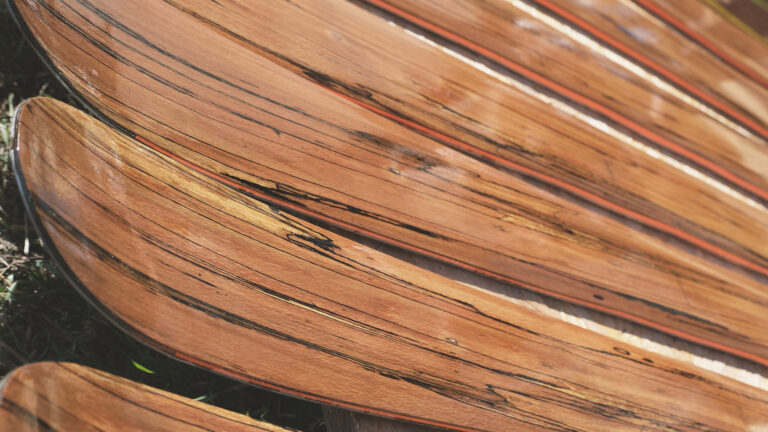
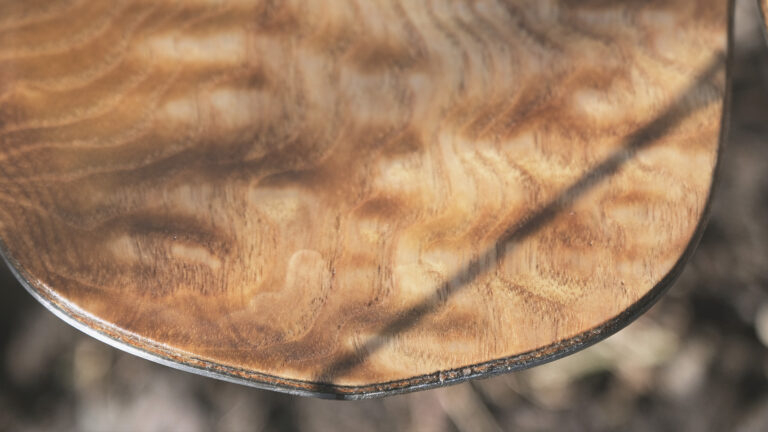
Tip and Tail Reinforcements
Tips and tails experience the highest impact forces, from landings, bumps, and occasional collisions. Many skis incorporate stainless steel or hardened steel inserts in these areas, which:
Resist abrasion and chipping.
Work synergistically with bamboo sidewalls to distribute impact stress.
Maintain the integrity of the core and laminate during hard landings or backcountry skiing.
The combination of natural bamboo, fibre laminates, and selective metal reinforcement creates a tip and tail structure that is resilient yet still light and lively.
